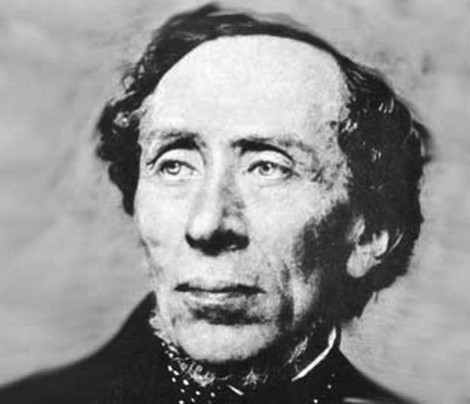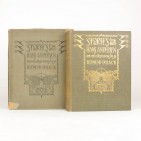ANDERSEN, Hans Christian
“Everything you look at can become a fairy tale and you can get a story from everything you touch.”
Born into an impoverished family in Odense, Denmark, at the turn of the nineteenth century, Hans Christian Andersen wanted, above all other things, to be famous. When a young child his father read The Arabian Nights to him, and later he listened to the folk legends recounted by his mother, both of which fired his imagination. When only 14 he left home for Copenhagen hoping to become an actor but instead his social awkwardness led to misery and humiliation until he found a patron to sponsor his education. During the early 1930s he wrote poetry, short stories and a novel, all of which were published with moderate success. In 1935, however, he published a small pamphlet of original fairy stories, swiftly followed by two further pamphlets, all three of which were then produced bound together in 1837. The Eventyr, fortalte for Børn (Fairy Tales told for Children) was not immediately successful, but it slowly gained recognition and by 1845 the tales began to be translated into other languages, including English, which began Western Europe’s enduring love affair with his fairy stories. Andersen continued to write additional tales to add to the collection until 1872, by which time there were 168, many of which reflected his early life as they were concerned with the miseries of poverty (The Little Match Girl) or the suffering of the outcast (The Ugly Duckling).
Andersen achieved his ambition to be famous, receiving an annual stipend from the Danish Government for being a "national treasure", and just prior to his death a statue was commissioned in his honour.
The universal themes of the fairy tales make them as relevant and loved today as they have were when first written, and over the years they have been illustrated by the foremost artists of the time, including such luminaries as Kay Nielsen, Arthur Rackham, Edmund Dulac and numerous others.
We stock first edition books by Hans Andersen as well as illustrated versions which can be seen below.
Add to favourites


